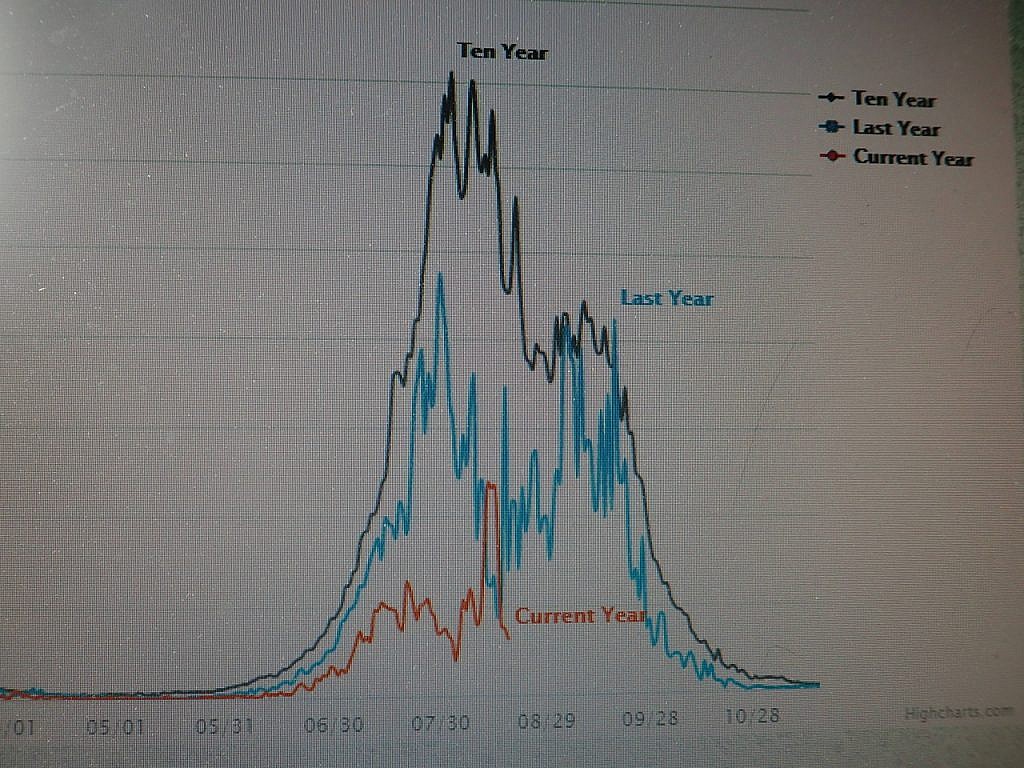
by Scott Sadil
I hate to be the bearer of bad news.
But the numbers are too grim to ignore.
Latest reckonings show that only 25,000 summer-run Columbia River basin steelhead have passed Bonneville Dam, the lowest passage on record at this point in the season. Worse still is the number of wild summer steelhead: only 13,000 — another record to date.
Each of these record low counts represents about 20 percent of the most recent ten-year averages – numbers so low that a coaltion of conservation groups is calling for a seasonal shutdown on steelhead sportfishing in the Columbia basin.
On a related note, the fabled North Umpqua was closed to steelhead fishing August 10, a response to counts of summer steelhead passing Winchester Dam at about 20 percent of average.
Summer-run steelhead, of course, have long been at the heart of the Northwest fly-fishing community, capturing the imagination of anglers throughout the region, from northern California to the famous Skeena River drainage in British Columbia. Ascending rivers to spawning grounds often hundreds of miles from the Pacific, these interior steelhead can become “trouty” in their behavior, often willing to move to surface patterns and presentations in ways rarely possible with coastal winter-run fish. The first steelhead rise to a waking muddler has been known to change the direction – not always for the better – of an angler’s career.
So what’s behind the horrific numbers, the dismal state of this year’s summer run of steelhead?
Cause and effect, we all know, is a tricky game. Yet it’s worth noting that this year the water above Bonneville Dam (a.k.a., the Bonneville Pool) reached 70°F during the Fourth of July weekend, and since then water temperatures haven’t dropped below that important mark. (68°F, you may recall, is considered the harmful threshold for steelhead.) All of this warm water, need I add, is a result of both unprecedented summer heat and the long chain of still-water reservoirs, backed up behind dams from Bonneville up to Lewiston, Idaho.

Or do we step back and take a broader view? In a recent report published in the journal Ecosphere, researchers from the University of British Columbia reported that steelhead and salmon have lost as much as 85 per cent of the historical flood plain along the lower Fraser River, findings all but identical to those reported last year in a different study made of tidal wetlands throughout the Northwest. Start comparing the diminished size of steelhead and salmon runs with this dramatic loss and degradation of essential habitat, and you quickly see why current runs of salmonids, which include steelhead, pale in comparison to historic numbers.
As one researcher noted in the Fraser River study, “While much emphasis has been placed on the role of marine conditions in wild Pacific salmon recovery, the magnitude of habitat loss cannot be ignored and suggests it is a major driver of observed salmon declines.”
______________________________________________________________________________
Gray’s angling editor Scott Sadil caught his first steelhead on the North Umpqua during a World Series he can’t quite recall.
